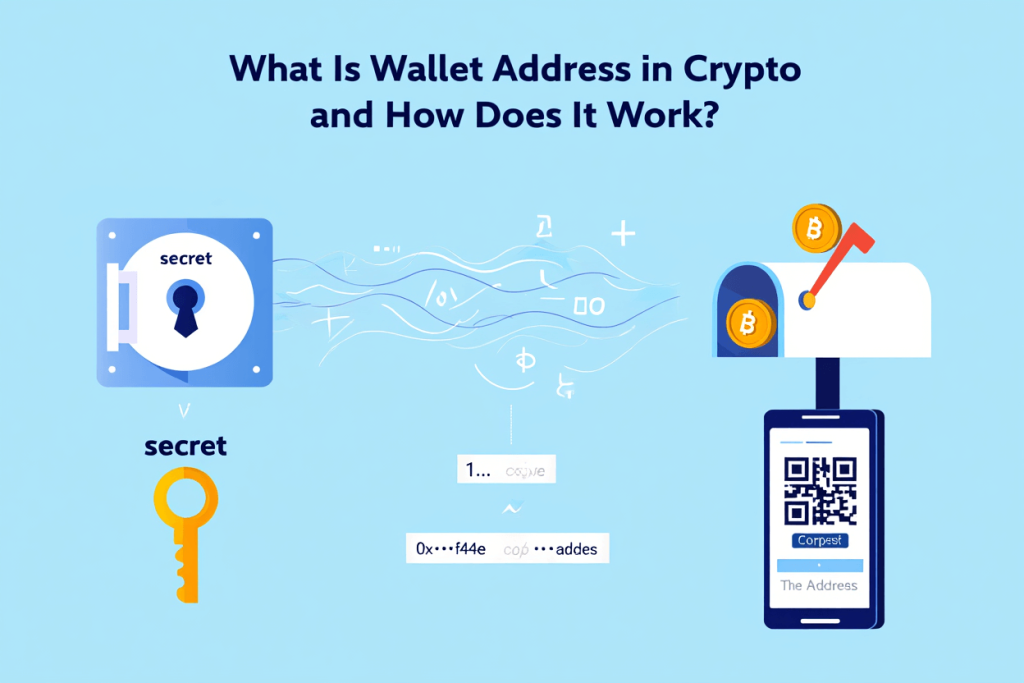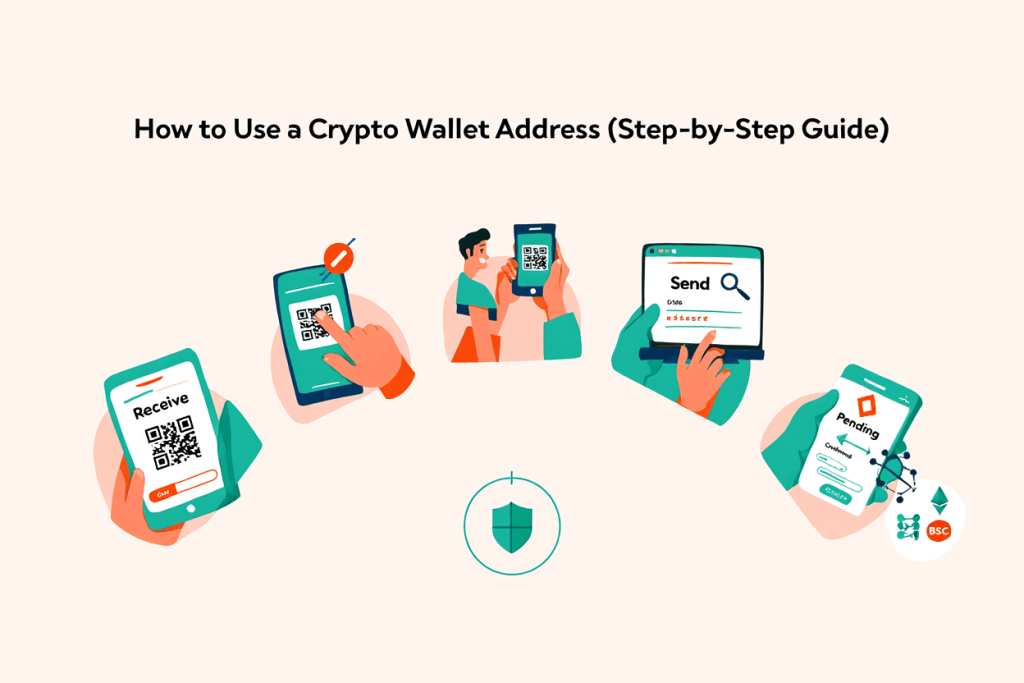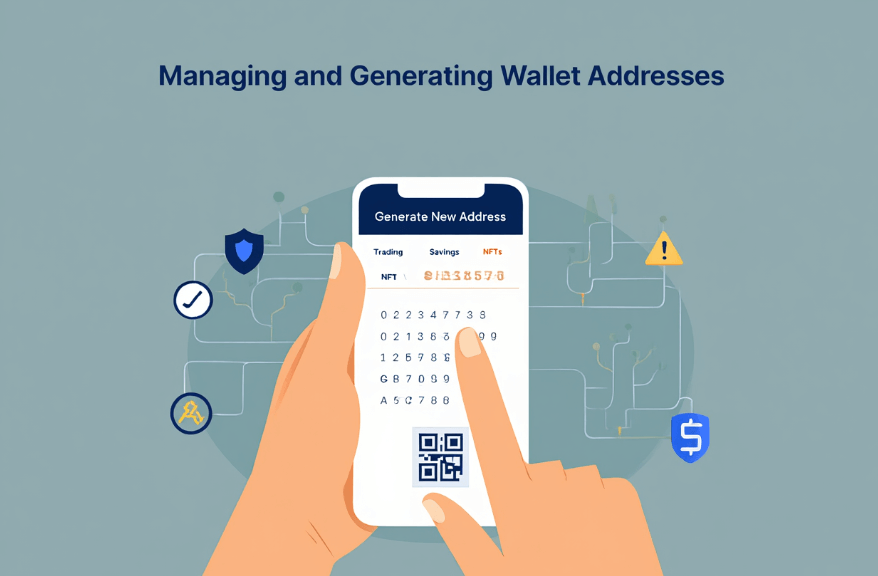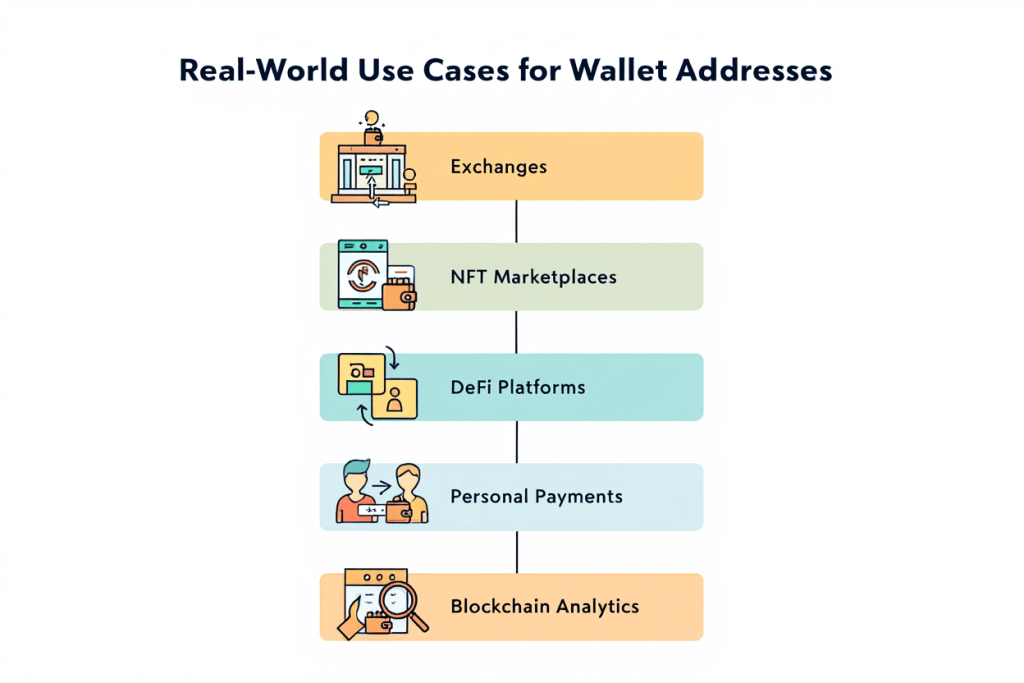Physical Address
304 North Cardinal St.
Dorchester Center, MA 02124
Physical Address
304 North Cardinal St.
Dorchester Center, MA 02124

What is wallet address in crypto? It’s at the heart of how digital currencies are sent, received, and stored. In its simplest form, a wallet address is a unique string of letters and numbers, an identifier that tells the blockchain where to send or receive crypto. If you think of your bank account number for wiring money or your email address for sending messages, a crypto wallet address serves a similar purpose in the world of decentralized finance. Without it, assets would have nowhere to go.
As the digital economy expands into 2025, recognizing and properly using wallet addresses has become more important than ever, whether you’re moving Bitcoin, Ethereum, or the latest tokens. Imagine: sending Bitcoin is like sending an email, your wallet address is what enables that transaction to reach its destination safely. Understanding how these addresses work lays the groundwork for securely navigating the fast-evolving world of crypto.
Wallet addresses operate as unique identifiers on public blockchains, directing where digital assets can be sent and received. Each address is generated through cryptography, which pairs a public key (what you share to receive funds) and a private key (which you must keep secret for security). Here’s a simplified flow: your private key, a randomly generated and securely stored code, produces a public key using complex mathematical algorithms. From that public key, your wallet address is derived, usually as a shorter and more user-friendly string.

For example, a Bitcoin wallet address might look like 1A1zP1eP5QGefi2DMPTfTL5SLmv7DivfNa (26–35 characters, alphanumeric), whereas an Ethereum address starts with 0x, like 0x742d35Cc6634C0532925a3b844Bc454e4438f44e (42 characters). While the underlying math is intricate, users only interact with the address itself, meaning you never need to see or understand your private key unless restoring your wallet.
Think of your wallet address as a mailbox: people can send you mail (crypto), but only you possess the key to open and use it. In most wallet apps, you’re shown your own address, ready to be copied or shared safely. As we explore the variety and security of addresses in detail, knowing where yours comes from will help you avoid errors and make confident transactions in 2025.
To explore similar concepts, check our crypto knowledge section for beginner-friendly explanations.
Here’s a quick side-by-side comparison of major address types:
| Blockchain | Typical Prefix | Example Format Length | Reusable? |
|---|---|---|---|
| Bitcoin | 1, 3, bc1 | 26-42 chars | Yes |
| Ethereum | 0x | 42 chars | Yes |
| Litecoin | L, M | 26-33 chars | Yes |
| USDT | 0x, TR | 34-42 chars | Yes |
| Ethereum Classic | 0x | 42 chars | Yes |
As seen above, addresses can look quite different based on the blockchain. QR codes have become a standard way to share addresses safely, minimizing copying errors. Understanding these differences isn’t just trivia, it’s vital for reducing mistakes and maximizing security. For instance, sending Bitcoin to an Ethereum address can result in permanent loss. As the crypto ecosystem diversifies in 2025, being able to recognize and verify these addresses is an essential user skill.
Below are step-by-step how to use a Crypto Wallet address:

User Tip: If you’re expecting payment, always double-check the address you provide and confirm that the network matches the sender’s (e.g., don’t use an Ethereum address for Binance Smart Chain tokens).
These steps apply across most major crypto wallets, ensuring safe and straightforward transfers whether you’re receiving a friend’s payment, withdrawing from an exchange, or interacting with DeFi protocols.
Real-world caution: In 2021, users lost millions to phishing addresses that closely mimicked popular wallet UIs. Always source addresses from official wallet apps and never follow unsolicited crypto links.
Staying vigilant with your wallet address is your best defense in this rapidly evolving crypto landscape, take every small step seriously.
Generating new wallet addresses is standard in most modern crypto wallets. By clicking options like Generate New Address (found in wallets such as Ledger or Trust Wallet), you can easily create a fresh receiving address, useful for boosting privacy or organizing funds.
Many wallets, like MetaMask and Ledger, support HD (Hierarchical Deterministic) architecture. This means they can generate virtually unlimited addresses from a single seed phrase or recovery phrase, simplifying backup and recovery. Generating new addresses is not just about security but also about privacy, reusing the same address repeatedly can make it easy for outsiders to track your entire crypto history.

Backup tips: Always store your wallet’s recovery phrase offline in multiple secure places. If you lose your device, you can recover all addresses if you have the phrase. Each wallet provider manages address generation differently:
| Wallet Provider | Address Management Features |
|---|---|
| Ledger | HD wallets, new address per transaction, easy export/import |
| MetaMask | Multiple account support, HD addresses, manual add |
| Trust Wallet | Multi-chain support, tab for generating/address book |
By understanding address management, you can safeguard your crypto and stay flexible as personal and professional uses grow.
Below are real-world use cases for Wallet Addresses:

Mini-case: You receive payment for freelance work from a global client, you simply provide your preferred wallet address, and track the incoming payment on the blockchain explorer. Or, you’re safeguarding your NFT collection; you use dedicated addresses per platform for organization and privacy.
Having multiple addresses empowers advanced users to separate business, personal, or investment activity, reducing oversight risks and boosting usability as the digital economy matures in 2025.
Still unsure? Revisit the main sections for deeper dives on safety, address types, and practical wallet use!
Further Resources:
Mastering wallet address basics puts you in control of your crypto future, safely, confidently, and ready for what comes next. Bookmark this page, try generating a new address, and dig into recommended resources to solidify your knowledge today.
In summary, crypto wallet addresses are the bedrock of every blockchain transaction. By understanding what they are, how they work, and how to use them safely, you greatly reduce the risk of mistakes and lost funds as you participate in the digital economy. As we move into 2025 and technology continues to evolve, these essentials will help both beginners and experienced users adapt securely.
Remember the golden rules: always safeguard your private key, double-check addresses, and embrace best practices. The world of cryptocurrency is both exciting and demanding, but with the right knowledge, like what you’ve just gained, you’re empowered to interact confidently with blockchain technology.
Web Tai Chinh is a dynamic financial news portal, delivering timely and reliable updates across markets to help users make well-informed investment decisions and grasp essential finance concepts with ease.
📞 Contact: 055 937 9204
✉️ Email: webtaichinh@gmail.com
📍 Address: 13 Ho Tung Mau, An Binh, Di An, Binh Duong